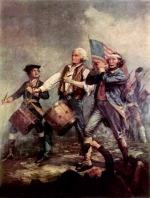|
This section contains 1,991 words (approx. 7 pages at 300 words per page) |

|
Artists and critics would not value originality until the Romantic era transformed arts and letters in the late eighteenth and early nineteenth centuries. During the Revolutionary era colonial writers absorbed a cosmopolitan ideal of belles lettres both through their reading of English literature and through their training in the classics at colleges such as Princeton. The rational aesthetic ideals of the enlightenment were developed in art criticism and literary essays, now referred to as term belles lettres, by educated men of letters. Belles lettres distrusted the expression of strong passions and the experience of subjective feeling that would come to dominate the Romantic vision of the artist as an isolated, inspired genius. Instead, like the philosophy of natural law that influenced Thomas Jefferson in his writing of the Declaration of Independence, enlightenment philosophy of aesthetics proposed that truth was universally valid, and...
|
This section contains 1,991 words (approx. 7 pages at 300 words per page) |

|




